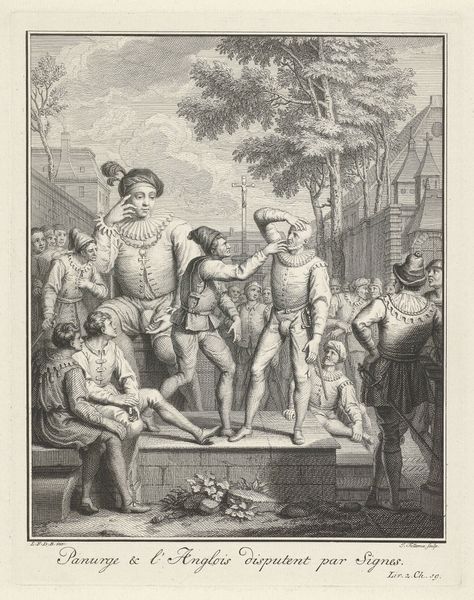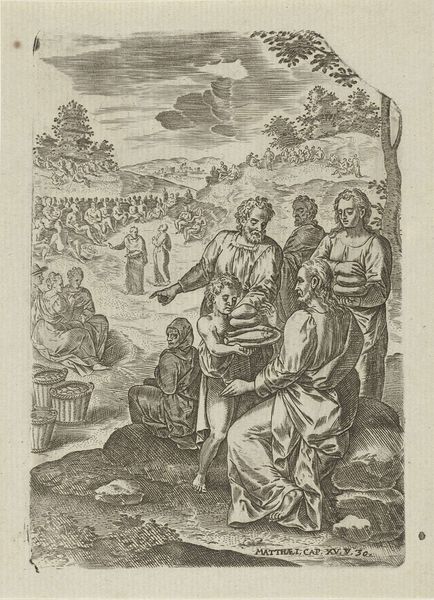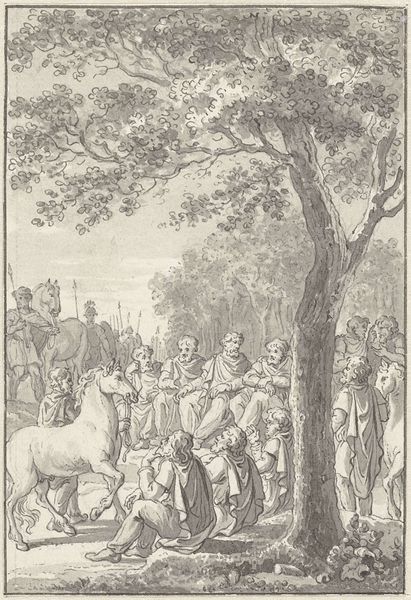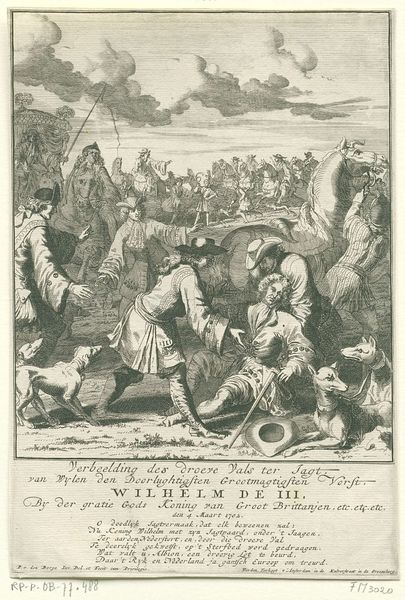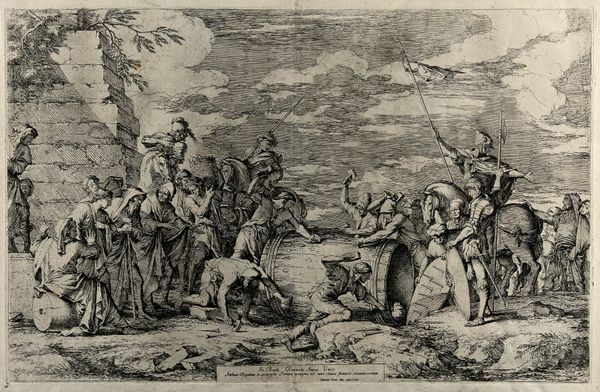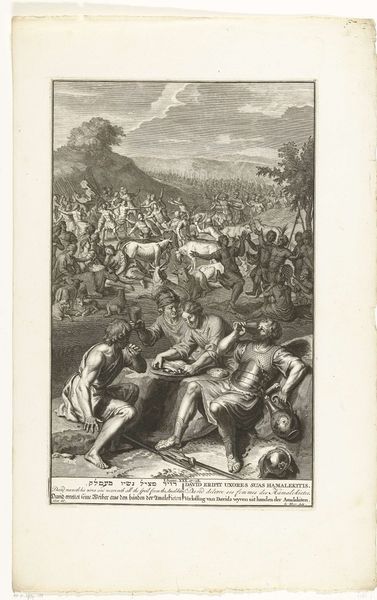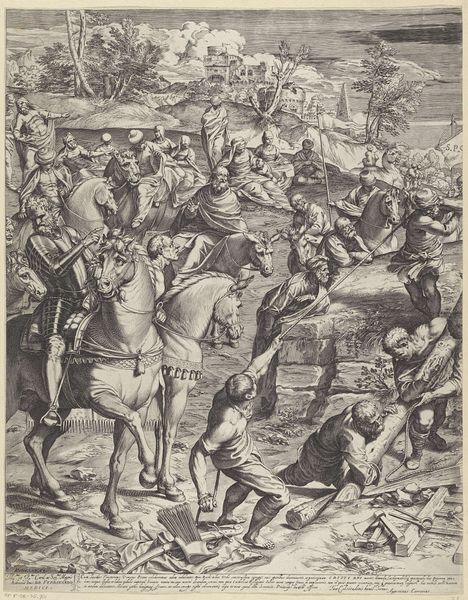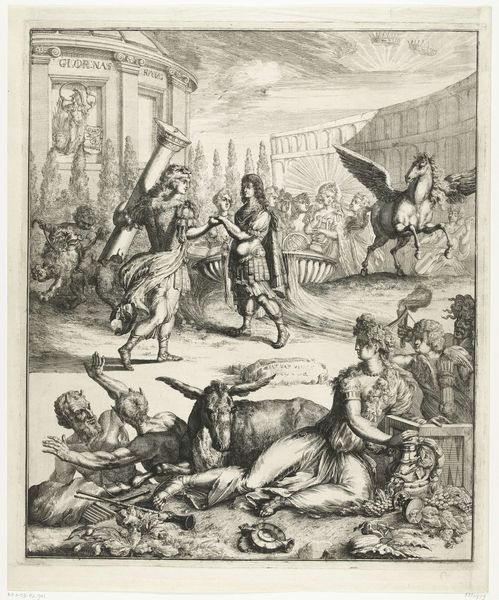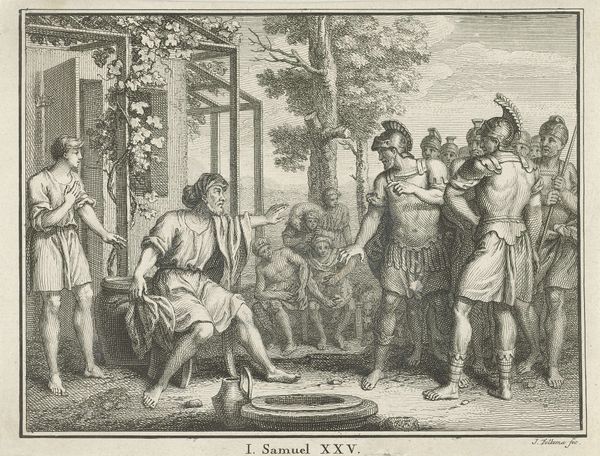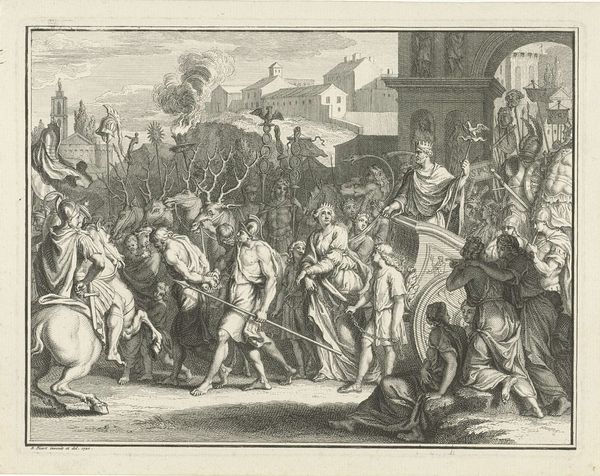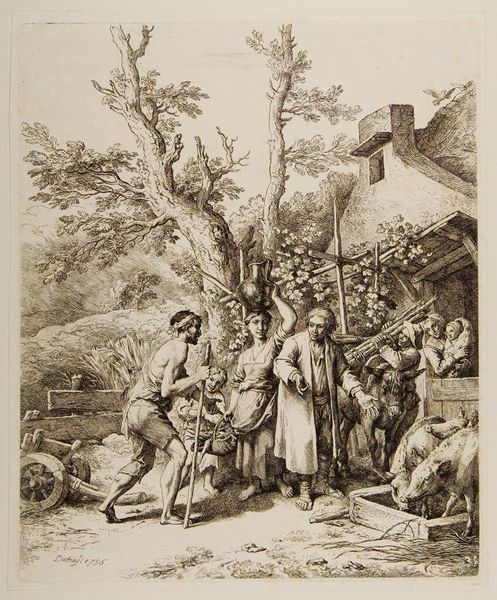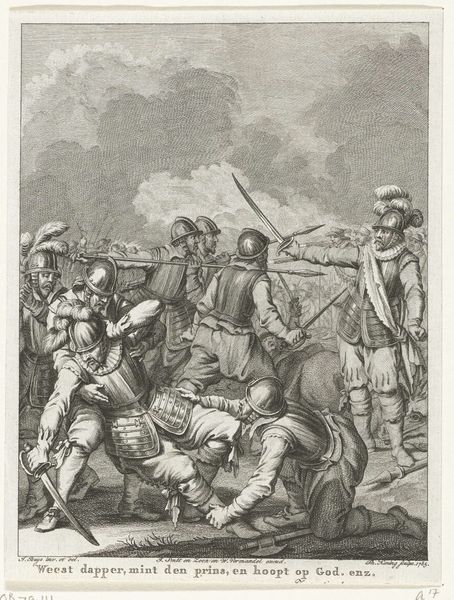
drawing, ink, pen, engraving
#
drawing
#
narrative-art
#
baroque
#
pen illustration
#
pen sketch
#
pencil sketch
#
ink
#
pen-ink sketch
#
pen
#
history-painting
#
engraving
Dimensions: height 360 mm, width 220 mm
Copyright: Rijks Museum: Open Domain
Editor: So, this is "Jozefs beker wordt gevonden in Benjamins zak" by Andries van Buysen the Elder, from around 1711. It’s a pen and ink drawing, almost like an engraving, illustrating a biblical story. The level of detail is incredible. What do you see when you look at this piece? Curator: Well, first I’m drawn to the material reality of it. The ink, the paper, the labor involved in creating these incredibly fine lines. This wasn't a quick sketch; it was a product of skilled craftsmanship. We must ask how these skills were learned, what their social context was, and whether their commercial aim impacted artistic license. The drawing is so precisely rendered. How was its creation structured? Was it collaborative in any sense? Editor: Collaborative? Like, done by multiple artists? Curator: Not necessarily multiple artists, but perhaps assistants preparing the paper, mixing inks, or even transferring a design. How was the labor divided? What was the social status of the people involved? Knowing that would color how we view the final product. This engraving allows for many copies and raises questions about access, audience and consumption in society. What impact would those aspects have? Editor: That’s a different way to look at art than I’m used to. I’m usually thinking about composition or the story being told. I like your perspective on considering how social aspects and the impact on material could give insights. Curator: Precisely. Considering those aspects opens up a richer understanding. Editor: Thanks for your comments; I learned quite a bit from this discussion. Curator: Likewise. Looking closely at production helps us appreciate and critically engage with artworks.
Comments
No comments
Be the first to comment and join the conversation on the ultimate creative platform.
